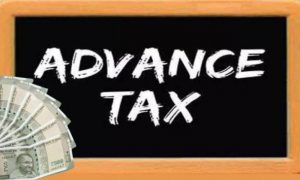Co-owners are considered to be joint legal owners of a property. Their joint authority stems from the purchase agreement, which may or may not specify the proportion of ownership. If the proportion is absent, the two co-owners are assumed to be 50:50 owners.
Co-ownership has many tax advantages. However, there are certain conditions that need to be satisfied for availing of these benefits. For income tax purposes, merely mentioning both names in the purchase deed would not guarantee tax benefits to both owners.
Read More:NPS withdrawal rule: Early withdrawal of NPS funds before maturity now possible? Check details
If a self-occupied property is acquired on loan, the taxpayer is allowed to claim deduction (i) under Section 24(b) for the interest paid on the loan up to Rs 2,00,000 and (ii) Section 80C for the principal repayment up to Rs 1,50,000, thus totalling Rs 3,50,000.
Read More:-How to increase your chances of getting approved for a home loan? Check details
Potentially, this total deduction can be claimed by each co-owner, thus making it a deduction of Rs 7,00,000 on one property. However, the co-owners would need to satisfy certain requirements.
First, the benefit is available in the proportion of the ownership if specified in the purchase deed. Second, both co-owners must produce proof of payment for their portion of ownership and repayment of the loan to their proportionate ownership. The loan agreement must mention both the co-owners as co-borrowers and place the responsibility of payment on both in the right proportion.
Read More:-Go First Cancels Flights Till May 9, Will Process Refunds To Passengers After DGCA Order
Further, at the time of purchase, TDS should be deducted by each co-owner in the applicable proportion so that the co-ownership is captured in the Annual Income Statement (AIS). The co-owners should also ensure that details of co-ownership are filled in their income tax return.
On let-out property
Each co-owner should ideally receive their share of rental income separately and offer it to tax in their individual tax returns under the head ‘income from house property’. Each co-owner can claim 30% standard deduction and the balance 70% would be taxable at the applicable slab rates of the co-owners.
Receipt of their share of income separately will also ensure that TDS is deposited on behalf of respective co-owners by the tenant and the co-owners can claim credit for it in their ITRs.
Read More:-Shopify layoffs: Company plans to cut 2,000 jobs, know impacted employees severance package
On sale of property
On sale of the property, the capital gain is taxable in the hands of the respective co-owners. The capital gains are calculated by deducting cost of acquisition from the sale proceeds and are taxable based on the holding period of the property. In case of co-owners, an exemption limit of Rs 2 crore for re-investment, as per Section 54, will apply to each co-owner providing a wider scope for re-investment.
It is also easier to get higher loan amounts from the banks depending on the income of the co-owner. This checklist will ensure that co-ownership details are captured in the AIS of the co-owners and it is easier for the income tax department to reconcile without sending notice for further documents.
The writer is partner, Nangia Andersen India. With inputs from Neetu Brahma



































